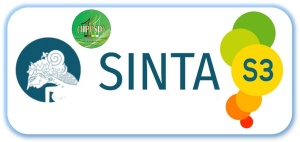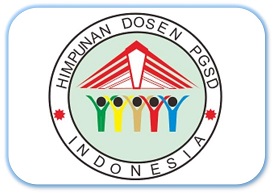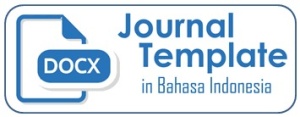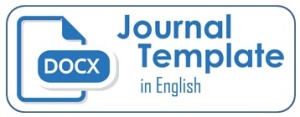Pemahaman Guru Sekolah Dasar terhadap Universal Design for Learning sebagai Strategi Belajar yang Mendukung Pendidikan Inklusif
 ), Wening Prabawati(2),
), Wening Prabawati(2), (1) Universitas Negeri Padang, Kota Padang
(2) Universitas Negeri Yogyakarta, Kota Yogyakarta
 Corresponding Author
Corresponding Author
DOI : https://doi.org/10.24036/jippsd.v8i1.129594
Full Text:
 Language : ind
Language : ind
Abstract
Keywords
References
Al-Azawei, A., Serenelli, F., & Lundqvist, K. (2016). Universal Design for Learning (UDL): A Content Analysis of Peer Reviewed Journals from 2012 to 2015. Journal of the Scholarship of Teaching and Learning, 16(3), 39–56. https://doi.org/10.14434/josotl.v16i3.19295
Barkley, R. A. (2015). Attention-deficit hyperactivity disorder: A handbook for diagnosis and treatment (4th ed.). The Guilford Press.
Black, R. D., Weinberg, L. A., & Brodwin, M. G. (2015). Universal Design for Learning and Instruction: Perspectives of Students with Disabilities in Higher Education. Exceptionality Education International, 25(2). https://doi.org/10.5206/eei.v25i2.7723
Browder, D. M., Trela, K., Courtade, G. R., Jimenez, B. A., Knight, V., & Flowers, C. (2012). Teaching Mathematics and Science Standards to Students With Moderate and Severe Developmental Disabilities. The Journal of Special Education, 46(1), 26–35. https://doi.org/10.1177/0022466910369942
CAST. (2018). Universal Design for Learning Guidelines version 2.2. Http://Udlguidelines.Cast.Org.
Clements, D. H., & Sarama, J. (2011). Early Childhood Mathematics Intervention. Science, 333(6045), 968–970. https://doi.org/10.1126/science.1204537
Courey, S. J., Tappe, P., Siker, J., & LePage, P. (2013). Improved Lesson Planning With Universal Design for Learning (UDL). Teacher Education and Special Education: The Journal of the Teacher Education Division of the Council for Exceptional Children, 36(1), 7–27. https://doi.org/10.1177/0888406412446178
Coyne, P., Pisha, B., Dalton, B., Zeph, L. A., & Smith, N. C. (2012). Literacy by Design. Remedial and Special Education, 33(3), 162–172. https://doi.org/10.1177/0741932510381651
Diamond, A. (2013). Executive Functions. Annual Review of Psychology, 64(1), 135–168. https://doi.org/10.1146/annurev-psych-113011-143750
Diamond, A., & Lee, K. (2011). Interventions Shown to Aid Executive Function Development in Children 4 to 12 Years Old. Science, 333(6045), 959–964. https://doi.org/10.1126/science.1204529
Engel, S. (2011). Children’s Need to Know: Curiosity in Schools. Harvard Educational Review, 81(4), 625–645. https://doi.org/10.17763/haer.81.4.h054131316473115
Gardner, H. (1999). Intelligence reframed: Multiple intelligences for the 21st century. Basic Books.
Gay, G. (2018). Culturally Responsive Teaching: Theory, Research, and Practice. Third Edition. Multicultural Education Series. Teachers College Press.
Hall, T. E., Meyer, A., & Rose, D. H. (2012). Universal Design for Learning in the Classroom; Practical Applications. The Guilford Press.
Hall, T. E., Strangman, N., Meyer, A., & Washington, D. (2004). Differentiated instruction and implications for UDL implementation (Effective Classroom Practices Report). U.S. Department of Education, Office of Special Education Programs.
Hehir, T., & Schifter, L. (2015). How Did you get Here? Students with disabilities and their journeys to Harvard. Harvard Education Press.
Kurth, J. A., & Keegan, L. (2014). Development and Use of Curricular Adaptations for Students Receiving Special Education Services. The Journal of Special Education, 48(3), 191–203. https://doi.org/10.1177/0022466912464782
McLeskey, J., Waldron, N. L., & Redd, L. (2014). A Case Study of a Highly Effective, Inclusive Elementary School. The Journal of Special Education, 48(1), 59–70. https://doi.org/10.1177/0022466912440455
Meyer, A., Rose, D. H., & Gordon, D. (2014). Universal design for learning: Theory and Practice. CAST Professional Publishing.
Novak, K. (2019). UDL Now!: A Teacher’s Guide to Applying Universal Design for Learning in Today’s Classrooms. CAST.
Nur Baiti, R. R., Soedjarwo, S., & Purbaningrum, E. (2021). Management of Student with Special Needs in Inclusive Schools (Case Study in the State Junior High School 30 Surabaya and Alam Insan Mulia Junior High School Surabaya). International Journal for Educational and Vocational Studies, 3(1), 57. https://doi.org/10.29103/ijevs.v3i1.3388
Ralabate, P. K. (2011). Universal Design for Learning: Meeting the Needs of All Students. The ASHA Leader, 16(10), 14–17. https://doi.org/10.1044/leader.FTR2.16102011.14
Rao, K., & Meo, G. (2016). Using Universal Design for Learning to Design Standards-Based Lessons. SAGE Open, 6(4), 215824401668068. https://doi.org/10.1177/2158244016680688
Reid, R., Trout, A. L., & Schartz, M. (2005). Self-regulation interventions for children with attention deficit/hyperactivity disorder. Exceptional Children, 71(4), 361–377.
Rimm-Kaufman, S., & Sandilos, L. (2015). Improving Students’ Relationships with Teachers to Provide Essential Supports for Learning.
Scott, L. A., Thoma, C. A., Puglia, L., Temple, P., & D’Aguilar, A. (2017). Implementing a UDL Framework: A Study of Current Personnel Preparation Practices. Intellectual and Developmental Disabilities, 55(1), 25–36. https://doi.org/10.1352/1934-9556-55.1.25
Shaywitz, S. (2003). Overcoming dyslexia: A new and complete science-based program for reading problems at any level. Knopf.
Shonkoff, J. P., & Philiips, D. A. (2000). From Neurons to Neighborhoods. National Academies Press. https://doi.org/10.17226/9824
Tomlinson, C. A. (2001). How to Differentiate Instruction in Mixed-Ability Classrooms. Pearson Education.
Tomlinson, C. A. (2014). The Differentiated Classroom: Responding to the Needs of All Learners. 2nd Edition. ASCD.
Vygotsky, L. S. (1980). Mind in Society (M. Cole, V. Jolm-Steiner, S. Scribner, & E. Souberman, Eds.). Harvard University Press. https://doi.org/10.2307/j.ctvjf9vz4
Zimmerman, B. J. (2002). Becoming a Self-Regulated Learner: An Overview. Theory Into Practice, 41(2), 64–70. https://doi.org/10.1207/s15430421tip4102_2
 Article Metrics
Article Metrics
 Abstract Views : 617 times
Abstract Views : 617 times
 PDF Downloaded : 135 times
PDF Downloaded : 135 times
Refbacks
- There are currently no refbacks.

This work is licensed under a Creative Commons Attribution 4.0 International License.







